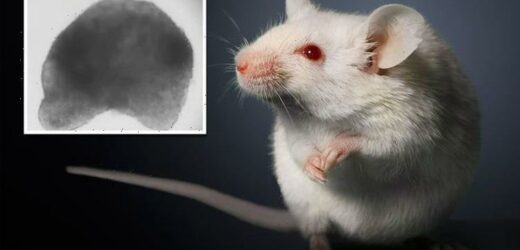Stem cells: Expert explains purpose and 'regenerative medicine’
When you subscribe we will use the information you provide to send you these newsletters. Sometimes they’ll include recommendations for other related newsletters or services we offer. Our Privacy Notice explains more about how we use your data, and your rights. You can unsubscribe at any time.
A team of scientists from the University of Virginia, US, has created the most complex lab-grown mammal to date. Using embryonic stem cells collected from mice, the researchers have managed to give the embryo a tiny beating heart – and the breakthroughs do not end there. The embryo’s muscles, blood vessels gut and even its nervous system are all in the process of developing.
Does this mean the scientists are on the cusp of growing an entire creature in a petri dish? No.
But the progress marks great leaps and bounds in the field of stem cells research – a field that aims to one day grow entire organs from scratch.
Stem cells are a kind of cell that can develop into a multitude of specialised cells like brain, tissue or muscle cells.
The ability to grow tissues and organs in a lab could one day help burn victims or people in dire need of organ transplants.
Trials in the UK, for instance, have been testing stem cell therapy for people with damaged heart tissue.
Bernard Thisse of the University of Virginia’s Department of Cell Biology said: “Human organs are made of multiple cells types that originate from different parts of the growing embryo.
“The gut, for example, is made from cells that form a hollow tube.
“Models of this tube in a dish have been made and are called gut organoids.”
The tube on its own, however, is not enough to create a fully functioning gut just yet.
The tube is missing a variety of other parts like smooth muscles and nerves that control the gut’s function.
Dr Thisses said: “The only way to have all the variety of cells necessary to the formation of functional organs is to develop systems in which all precursor cells are present.
Maastricht University create embryos from tiny stem cells
“The embryo-like entities we have engineered using stem cells are providing just this.”
The researchers figured out a way in which they instruct bundles of stem cells to kick start embryonic development.
According to Christine Thisse, also from the university’s Department of Cell Biology, the cells then go through the process step-by-step – much like a real embryo would.
She added: “What is amazing is that we can get the variety of tissues that are present in an authentic mouse embryo?”
So what is preventing the scientists from growing an entire mouse embryo in the lab?
Growing a complex and “sophisticated model” like this is no easy feat and researchers have so far had more luck with growing single cell types.
The Thisses’ embryo, in essence, is the beginnings of a mouse with different cell types that have been properly arranged and interwoven.
But there are key elements missing from the mix, such as the anterior part of the brain.
At present, the embryo’s development stops at a time corresponding to the middle stage of a mouse embryos gestation.
But the researchers are positive it is simply a matter of time before their already complex model is taken to the next level.
Dr Bernard said: “The embryoids we are currently producing lack the anterior brain domains.
“However, with the techniques we have developed, we should be able, at some point, to manipulate molecular signals that control embryo formation, and this should lead generating embryo-like entities containing all tissues and organs including the anterior brain.”
Dr Christine added: “The knowledge we acquired along all our career of developmental biologists served as a starting point for this study in the stem cell field.
“This was a big jump for us, but it shows that if you have a solid idea, it can be used to cross barriers and can be developed for other purposes.
“I say that for students: Nothing is definitive, there is room for knowing more and for solving problems.”
The research was published in the journal Nature Communications.
Source: Read Full Article





